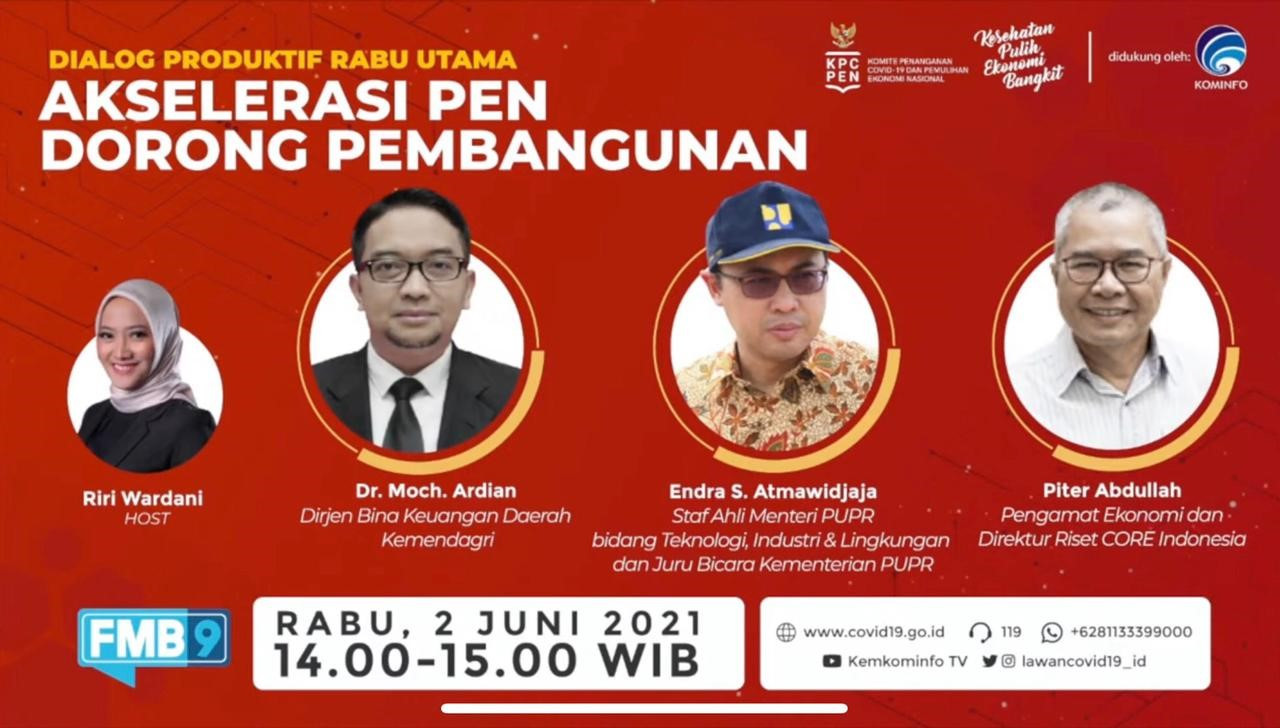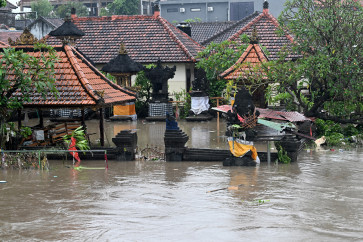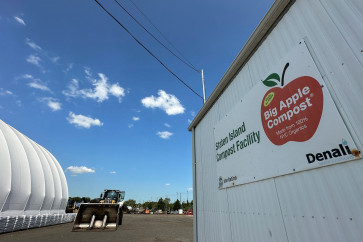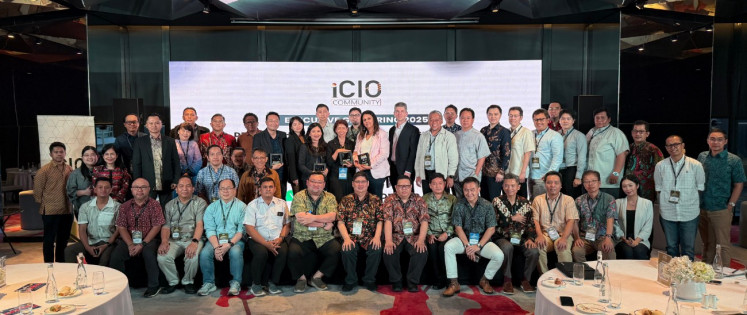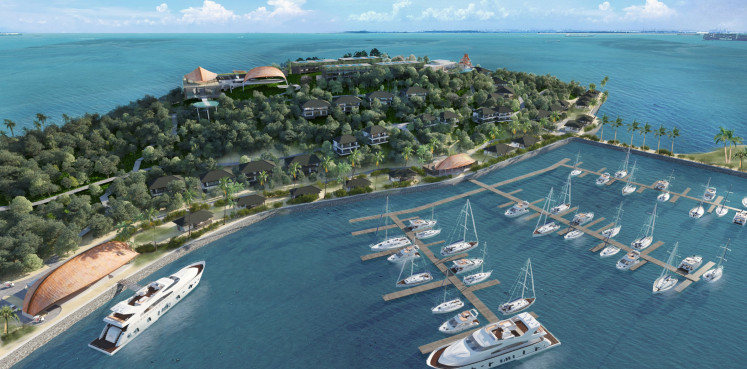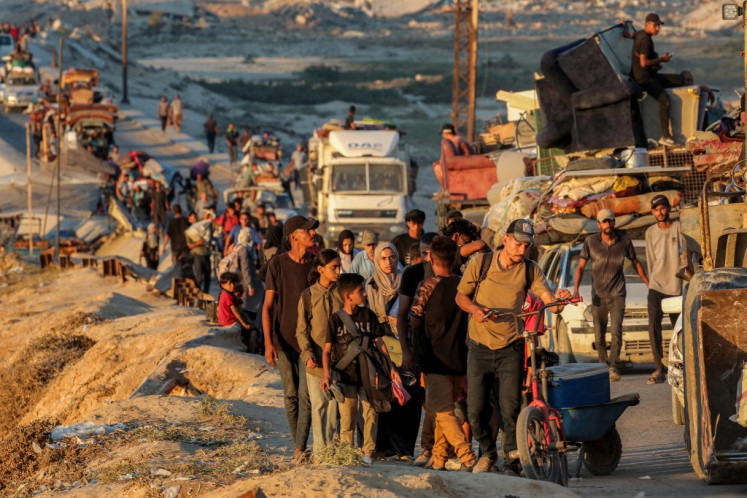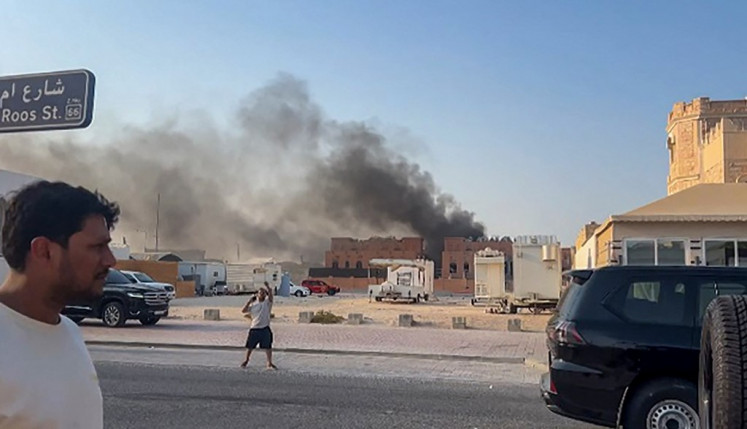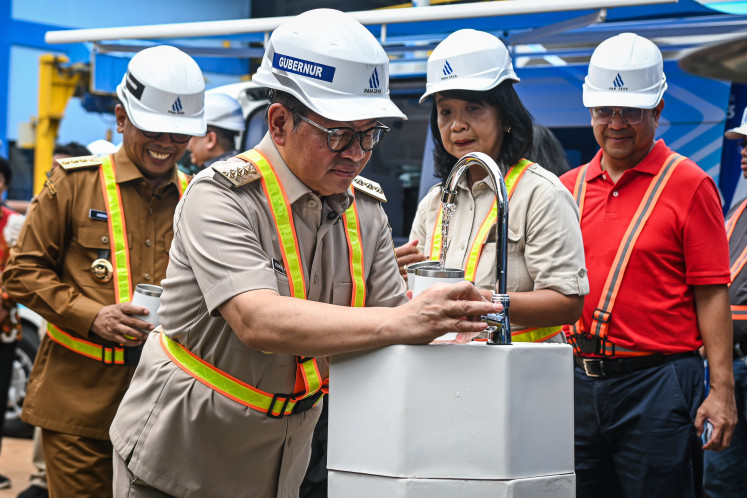Popular Reads
Top Results
Can't find what you're looking for?
View all search resultsPopular Reads
Top Results
Can't find what you're looking for?
View all search resultsRegions to spend more on labor-intensive projects as economy bounces back
Change text size
Gift Premium Articles
to Anyone
T
he Indonesian economy has seen improvements as the country’s first quarter economic development managed to crawl up to -0.74 percent, from -2.19 percent in the fourth quarter last year.
President Joko Widodo thus expected a more ambitious development of at least 7 percent by the end of the second quarter.
To meet the president’s target, director general of regional finance M.Adrian expected local governments to spend more on financing labor intensive projects. He said to date, local government’s budget absorption level was still very low, at 21.98 percent, from the total regional budget of Rp 1.19 quadrillion.
“We strongly hope that local governments can accelerate the budget absorption so we can meet the 7 percent target by the end of the second quarter,” he told a virtual discussion on Wednesday.
The discussion, which highlighted the acceleration of the national economic recovery to support development, was organized by the government’s COVID-19 response and national economic recovery committee.
Adrian added that focusing on labor intensive projects would help decrease open unemployment rates in the region. It’s domino effect would also help the people’s economy, which has been massively hit by the pandemic.
Speaking in harmony, Public Works and Housing Minister expert staff Endra S. Atmawidjaja said the ministry was going ahead with infrastructure construction to maintain jobs.
“Project construction will provide people with jobs and also help keep many industries alive, especially during the pandemic,” Endra said.
He added that the ministry was focusing on five fields and among them was building 20 labor intensive projects worth Rp 23.24 trillion. He said the projects varied from drainage system improvement, gate painting to road projects. These projects, he added, had lured people from remote villages to work at the projects.
“The realization level has reached 40 percent and these projects have involved around 1.2 million people,” he said.
At the same time, the ministry has also built Rp3.8 trillion worth of tourism infrastructure in various regions. Among places to see such development was Saribu Rumah Gadang in West Sumatra and Klangon Gate in in Yogyakarta.
Klangon Gate has been designed as a rest stop for tourists on their way to Borobudur temple in Magelang from Yogyakarta International Airport, which is located on the outskirts of Yogyakarta.
These new tourist attractions are expected to lure more tourists and thus support the local economy.
Commenting on this, economic expert and research director of CORE Indonesia, Peter Abdullah, agreed with the government’s strategies to focus on labor intensive projects as they could contribute hugely to people’s welfare.
“The idea of the whole economic recovery plan is to empower both business owners and the people so they can survive the pandemic and bounce back once the pandemic is over,” he said.
He also acknowledged that the economic recovery plan was the backbone of the country’s economy.
“The government has gone all out to maintain our economic resilience, including by continuing all labor intensive projects that have direct impacts to keep people’s financial situation afloat,” he said.

